New York is widely known for its landmarks, dense traffic, and fast pace. Beyond that image are places with historical and cultural value that rarely appear in travel guides. These New York hidden places include long-closed infrastructure, quiet green spaces, and lesser-known heritage sites scattered across the boroughs. Some are accessible on specific days, while others are limited to external viewing. Each one reflects a part of the city’s development linked to public health, private estates, or early civic planning. These remain overlooked despite their place in the city’s evolving urban and social history.
12 Secret Corners Of New York
These New York hidden places are scattered across the city, waiting to be noticed. Each one offers something rare, a chance to see the city through a quieter, deeper lens.
1. The Ramble Cave, Central Park
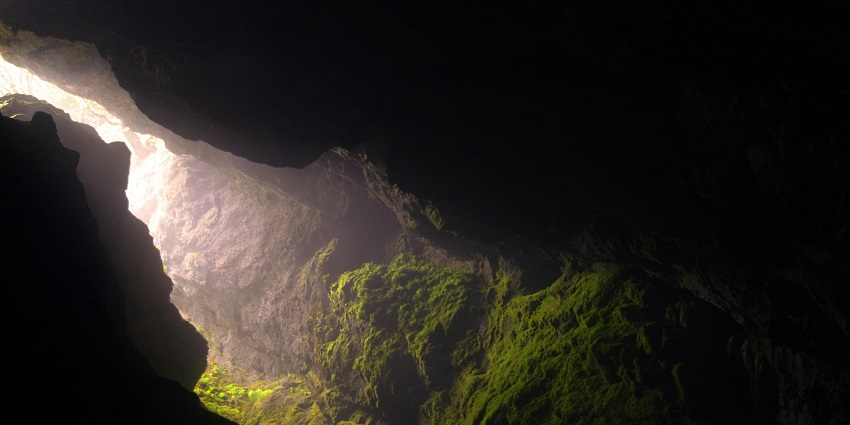
Photo: Tsvetoslav Hristov / Pexels / Image For Representation Only
Hidden in the tangled paths of Central Park’s woodland, The Ramble Cave is a forgotten corner that once played a quiet role in New York’s early years. It lies near the Lake, partly masked and in the 1800s, it was known as a hideout and occasional meeting place. The entrance is small, almost easy to miss, and there’s no sign telling you what it is. You reach it by following the winding trails through the wooded Ramble, where the sound of footsteps fades into the rustle of leaves. The cave no longer serves a purpose, but that’s what makes it feel like a relic, untouched and unbothered. For those searching for New York hidden places that still carry the feeling of another time, this cave offers a glimpse into the city’s quieter, slower past.
How To Reach: Enter Central Park from 79th Street and follow signs toward The Ramble
Timings: 6 AM – 1 AM
Nearby Attractions: Belvedere Castle, Shakespeare Garden
2. Roosevelt Island Smallpox Hospital Ruins

Photo: Wusel007 / Wikimedia Commons
Quietly standing at the edge of Roosevelt Island, this roofless hospital holds more than broken stone. Opened in 1856, it was once New York’s answer to a rising smallpox crisis, isolated, distant, and determined to protect the city. Over time, the building was left to decay and now, only its outer walls remain, with ivy climbing across grey stone and shattered frames. You can’t go inside, but the view from the path is enough. You can see where lives were once fought for and where time gave way to ruin. It’s easy to pass without knowing the story, but pausing here leaves a strange ache.
Nearby Attractions: Four Freedoms Park, Roosevelt Island Lighthouse
How To Reach: Take the Roosevelt Island Tramway from Manhattan or F train to Roosevelt Island
3. Berlin Wall Segment At 520 Madison Avenue
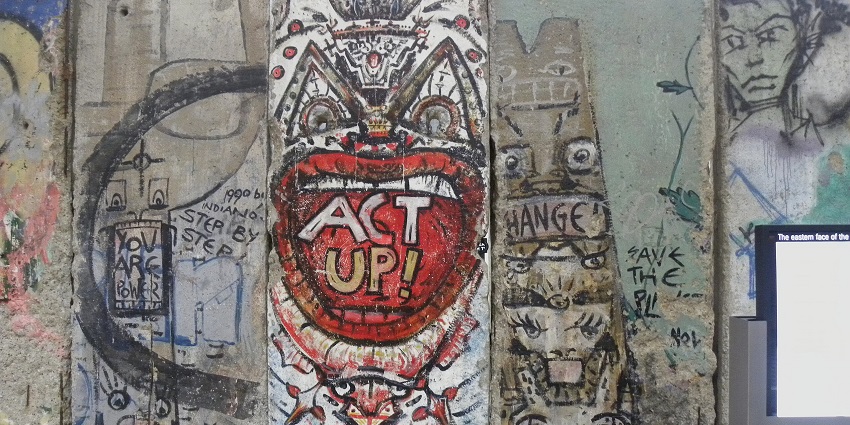
Photo: Mathieu Landretti / Wikimedia Commons
Behind a sleek glass lobby in Midtown Manhattan stands a broken piece of a wall that once divided a country. This segment of the Berlin Wall, quietly placed in the open-air lobby of 520 Madison Avenue, rarely draws attention. Most people pass by without noticing it. Covered in graffiti on one side and left bare on the other, it captures a moment in time that shaped the world. There’s no plaque explaining its weight. Just the concrete, worn and chipped, resting quietly in the middle of New York’s corporate landscape. What makes this one of the most overlooked New York hidden places is how it blends into its surroundings. It’s not behind museum glass, and there’s no guided tour.
How To Reach: 5-minute walk from 5th Avenue–53rd Street subway station
Timings: 9 AM – 5 PM
Nearby Attractions: Museum of Modern Art, St. Patrick’s Cathedral
4. Museum In Cortlandt Alley
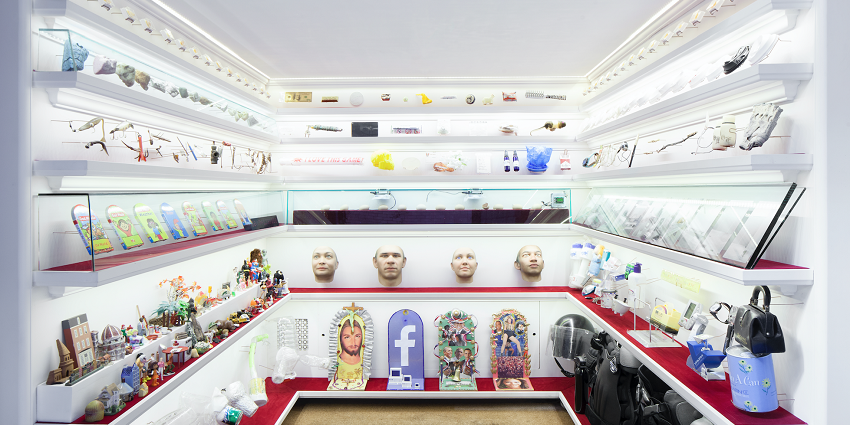
Photo: Alexkalman / Wikimedia Commons
Tucked into a freight elevator shaft in a quiet alleyway, this museum is smaller than most living rooms, but its contents are anything but ordinary. The museum, located at 4 Cortlandt Alley, collects objects that tell stories the big museums miss. Inside, you’ll find things like a shoe thrown at a politician, plastic spoons from airline meals, and security items confiscated at airports. Each object is real and oddly moving, showing how everyday things hold unexpected meaning. The space is tight; you view the collection through a small window if it’s closed or step inside on weekends. No glossy displays or audio guides here, just raw glimpses into overlooked corners of the world.
How To Reach: Nearest station is Canal Street; walk to 4 Cortlandt Alley
Timings: 12 PM – 6 PM
Nearby Attractions: Chinatown, Museum of Chinese in America
5. New York Marble Cemetery
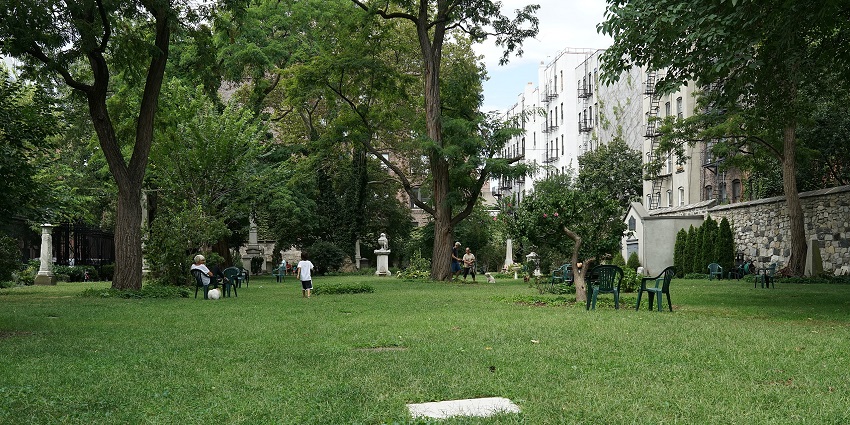
Photo: Paranoid123 / Wikimedia Commons
Behind an unmarked gate on East 2nd Street lies a burial ground most New Yorkers have never seen. Founded in 1830, the New York Marble Cemetery is the city’s oldest public non-religious cemetery. It doesn’t look like much from outside, and there are no standing gravestones once you enter. The vaults lie underground, made from solid marble to protect the living during times of disease. Names are inscribed on slabs along the inner walls, and the centre is a grassy square that stays quiet. On open weekends, visitors step inside to find something rare. There are no signs pointing here, no tourists with cameras.
How To Reach: Take the F train to 2nd Avenue, walk to 2nd Street
Nearby Attractions: Bowery Mural, Merchant’s House Museum
6. Green-Wood Cemetery Catacombs
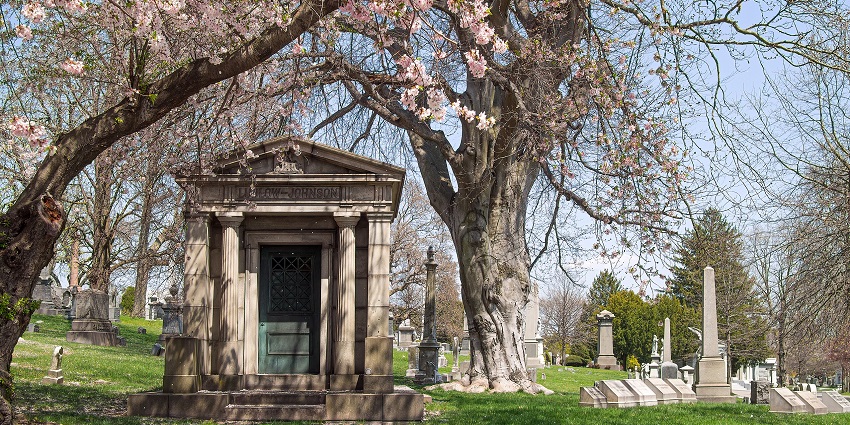
Photo: Rhododendrites / Wikimedia Commons
Hidden beneath one of Brooklyn’s oldest cemeteries lies a chamber few have seen. The catacombs at Green-Wood were built in the early 1850s and hold 30 marble vaults behind iron gates. These underground passages offered an alternative for families who could not afford a private mausoleum. Though usually closed to the public, Green-Wood occasionally offers “After Hours” tours, allowing visitors to explore the tunnels by night. Inside, the atmosphere is cool and quiet, the vault names etched into bronze and marble. This space has also hosted contemporary art like Heidi Lau’s ceramic sculptures suspended from skylights and intimate concerts such as the Angel’s Share series. It’s rare to step into a space so removed from the city yet so full of presence.
How To Reach: R train to 25th Street; short walk to cemetery entrance
Nearby Attractions: Prospect Park, Industry City
7. Track 61, Waldorf Astoria’s Abandoned Train Platform
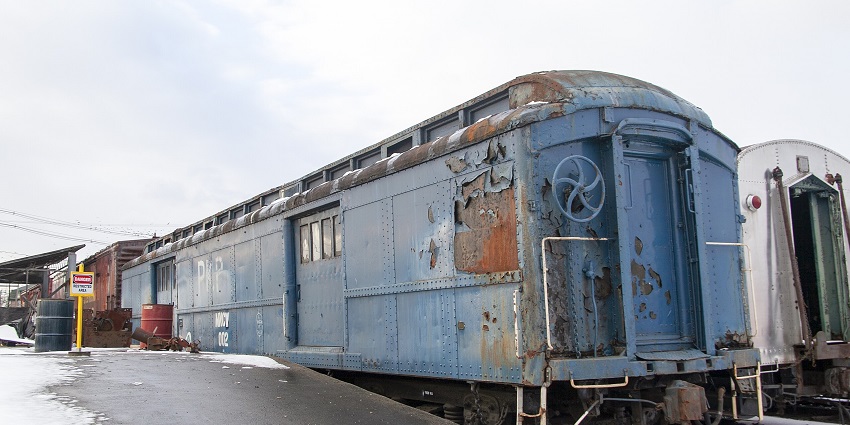
Photo: Michelle Young / Wikimedia Commons / Image For Representation Only
Beneath the Waldorf Astoria Hotel, tucked away from view, lies a hidden train platform that once moved presidents in silence. Known as Track 61, this private railway stop connected directly to Grand Central and allowed secretive entries and exits for high-profile guests, including Franklin D. Roosevelt, who used it to hide his paralysis from public view. The track still exists, though it’s sealed off and no longer in use. The platform is bare, dusty, and surrounded by mystery. A rusted elevator once used to lift armoured cars directly into the hotel, remains in place. There are no signs marking this part of the station, and few photographs exist. Even longtime city residents don’t know it’s there. It is, quite literally, underfoot. Among New York’s hidden places, Track 61 is a quiet reminder of how the city was built to serve both spectacle and secrecy.
How To Reach: Not publicly accessible; nearest view is from the Grand Central vicinity
Nearby Attractions: Grand Central Terminal, Chrysler Building
8. The Whispering Gallery At Grand Central
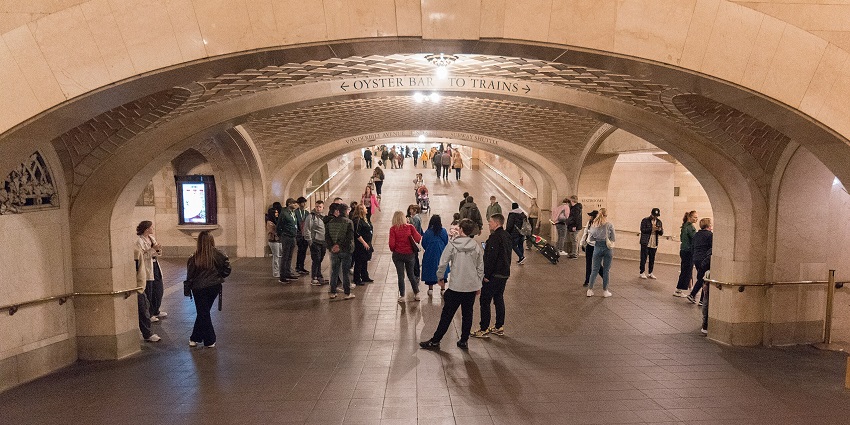
Just outside the Oyster Bar in Grand Central Terminal, there’s a tiled archway where voices travel in the most unexpected way. This space, known as the Whispering Gallery, plays a trick on sound. Stand at one corner of the curved wall and speak softly, the person across from you will hear every word, even with a crowd passing between. The effect comes from the way the vaulted ceiling carries sound, bouncing it across the curve. Lovers have whispered proposals here, and strangers share secrets. It’s quiet, intimate, and oddly magical for a place inside one of the city’s busiest hubs. As far as New York’s hidden places go, this one proves that a little curiosity can still reveal something truly unexpected.
How To Reach: Inside Grand Central Terminal, outside Oyster Bar & Restaurant
Timings: 5:30 AM – 2 AM
Nearby Attractions: Grand Central Market, New York Transit Museum Annex
9. The Earth Room By Walter De Maria
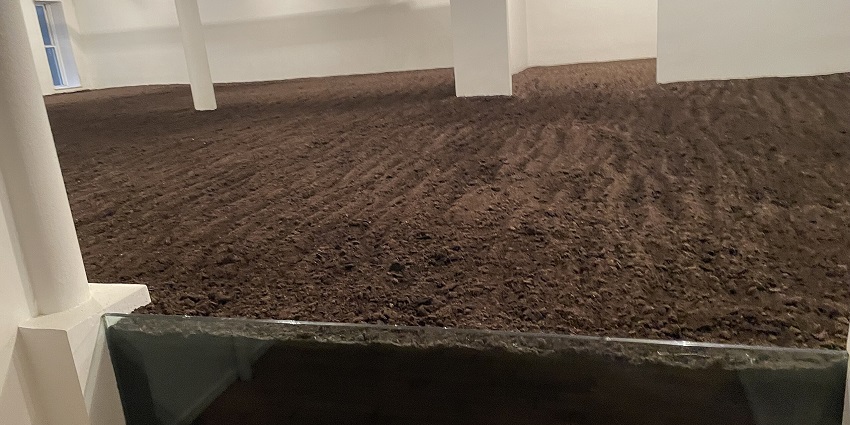
Photo: 19h00s / Wikimedia Commons
On the second floor of a SoHo building, behind a plain white door, sits 280,000 pounds of soil spread across a spotless white room. This is The New York Earth Room, an installation by artist Walter De Maria that has quietly existed since 1980. The scent of damp earth hits you before anything else. It’s silent, unmoving, and completely out of place in the middle of the city. You can’t walk into the room, only observe it from behind a waist-high barrier. The contrast between polished floorboards and the dark, living soil is unsettling and strangely calming. There’s no explanation, and that’s what keeps people coming back. Of all the New York hidden places, this one might be the most puzzling.
How To Reach: Broadway-Lafayette station; walk to 141 Wooster Street
Timings: 12 PM – 6 PM
Nearby Attractions: SoHo art galleries, Judd Foundation
10. Pomander Walk

Photo: Sonja Stark / Wikimedia Commons
On a block that looks like any other, between 94th and 95th Streets, there’s a gate that hides something most people never realise is there. Behind it is Pomander Walk, a row of old-world houses that don’t belong in New York but somehow remain. Built in 1921, the lane was meant to be temporary housing. Its design came from a British play, and it shows. The homes are narrow and stacked closely together, with Tudor-style details, colourful doors, and curved iron rails. The walkway between them is just wide enough to pass through, lined with planters and balconies. Though it’s private, you can see enough from the sidewalk to understand how unusual it is. In a city known for glass towers, this small stretch feels out of step, and that’s what makes it stay in your memory.
How To Reach: Take the 1 train to 103rd Street; walk to West 94th Street
Nearby Attractions: Riverside Park, Symphony Space
11. Doyers Street
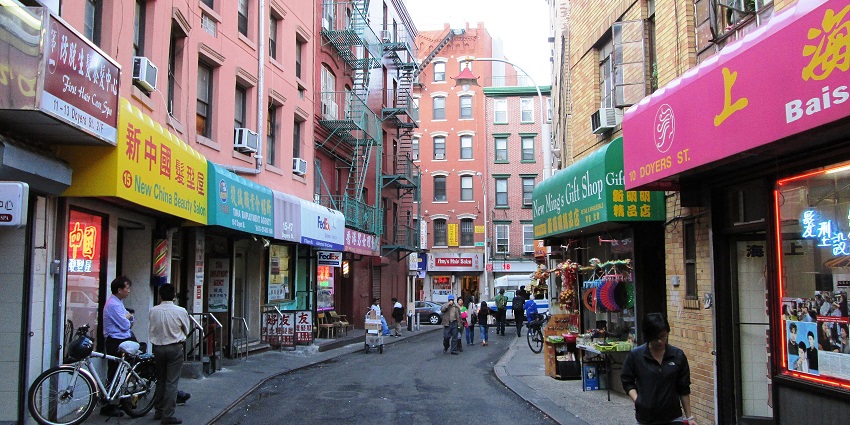
Photo: Beyond My Ken / Wikimedia Commons
This narrow, curved stretch in Chinatown doesn’t look like much at first. But Doyers Street has a long and layered past. In the early 1900s, this bend in the road saw more violence than anywhere else in the city, as rival tongs battled in the shadows. The sharp turn gave attackers cover, and stories tell of tunnels beneath buildings that allowed swift escapes. Today, it’s a very different place but the past hasn’t disappeared. You’ll find barber shops, tiny bars, and Nom Wah Tea Parlor, which has served dim sum for over a hundred years. Murals now brighten the alley, and lanterns float above, yet something about it still feels hushed.
How To Reach: Canal Street subway station; walk into Chinatown
Timings: 24*7
Nearby Attractions: Nom Wah Tea Parlor, Columbus Park
12. Fort Tryon Park Heather Garden
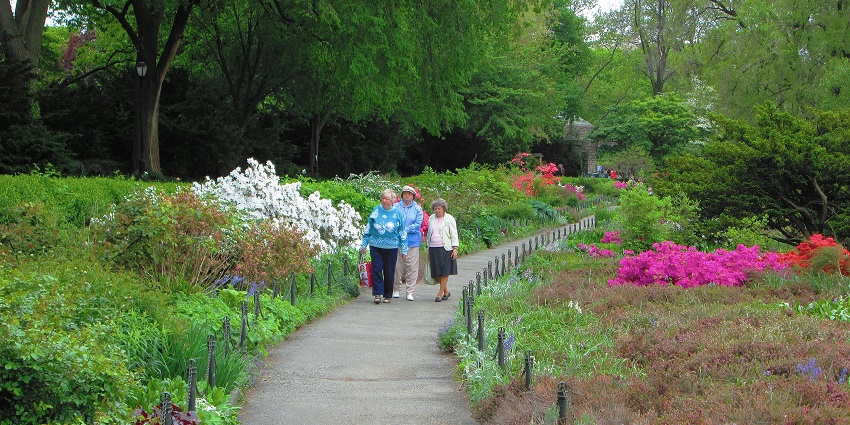
Photo: Beyond My Ken / Wikimedia Commons
High above the Hudson River, in the northern tip of Manhattan, lies a garden that feels far from the rest of the city. The Heather Garden in Fort Tryon Park is a stretch of peaceful pathways lined with stone walls, rare plants, and sweeping views. Once part of a private estate, it was opened to the public in the 1930s with help from the Rockefeller family. The garden is named for the many types of heather that bloom here, adding colour even in colder months. Though it’s open daily, it rarely feels crowded. Birds nest in the hedges, and the sound of leaves rustling often drowns out the noise of traffic. It’s also steps away from the Met Cloisters, but few visitors know to stop here.
How To Reach: A train to 190th Street; enter via Margaret Corbin Circle
Timings: 6 AM – 1 AM
Nearby Attractions: The Met Cloisters, Hudson River Greenway
Some parts of New York stay quiet on purpose. They sit behind walls, beneath parks, or at the end of streets no one thinks to follow. These New York hidden places aren’t made for attention, but they stay with you long after you leave. Each one tells its own story without needing to explain. From forgotten tunnels to secret gardens, they show the city in ways most people never see. If you’re planning to explore beyond the usual spots, let TripXL take you there.
Cover Photo: Superbass / Wikimedia Commons


 WhatsApp
WhatsApp
 Twitter
Twitter









